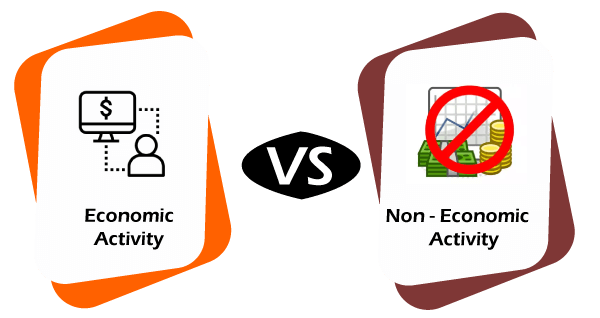Difference between Economic and Non-Economic ActivitiesPeople undertake many activities that are either to earn a living or to learn something. These activities teach a lot of things to individuals. For instance, when we undertake an activity in a group, it enhances our leadership qualities, teamwork, etc. Well, everything done on a daily basis can also be called as an activity. Playing games or undertaking several activities inculcates a sense of qualities within a person. Now, there are two significant kinds of activities, i.e., economic and non-economic activities. So, what are economic and non-economic activities? What are the differences between these two? What importance do they hold in an individual's life? These questions might occur to you regarding these terms. So, let us begin by first knowing the meaning of these terms. 
Economic ActivitiesEconomic activities are defined as the activities undertaken to provide goods and services, purchasing, selling, etc. The activity that includes producing and consuming goods is termed as an economic activity. Economic activities are present at every level in society. These activities are undertaken by the people in order to earn a living. There are four significant economic activities, namely production of goods and services, consumption of services and goods, distribution of services and goods, and resource management. Apart from these, there are five prominent economic activities undertaken by the people. They are the service industry, intellectual sector, raw material & corporate sector jobs, manufacturing & industry, and the quinary sector. Out of all these economic activities, the most important activity is agriculture. This is because rural life depends upon agriculture, and as we know, India has more rural areas than urban areas. Economic activities can be broadly classified into primary, secondary, and tertiary activities. Agriculture is a part of the primary sector activities. The primary sector also includes mining, fishing, hunting, forestry, etc. The secondary sector includes manufacturing jobs like textile production, handcrafts, etc. This sector helps in economic growth and development. The tertiary sector is also called the service industry, including retails, banking, wholesale services, insurance, healthcare, media, etc. Non-Economic ActivitiesNon-Economic activities are defined as the activities undertaken for providing services to other people. These activities are done for personal content and satisfaction. Examples of non-economic activities include homemakers doing day-today-tasks, a child playing with toys, etc. It is interesting to note that the motive of non-economic activities is social as well as psychological. These activities are done without the aim of monetary gains. The main characteristics of non-economic activities are that it leads to self-satisfaction, there is no aim of financial remuneration, and they are obligatory, i.e., they are done for satisfying social norms. Some of the kinds of non-economic activities are religious and cultural activities (visiting temples, worshiping God, and celebrating festivals), leisure-time activities (singing, dancing, painting), family-obligation activities (a doctor treating his family members), and social welfare activities (providing services like relief work during the flood, drought, war, etc.). Non-economic activities include day-to-day work, hobbies, interests, etc. Now, there are some differences between economic and non-economic activities. So, let us have a look at them.
So, these are some of the significant differences between economic and non-economic activities. Nevertheless, both kinds of activities are essential for an individual. Material gains and self-satisfaction are equally important. It helps in boosting the morale of an individual and helps him in working hard in his/ her respective fields. Thus, both economic and non-economic activities are important for personal and professional development.
Next TopicDifference between
|
 For Videos Join Our Youtube Channel: Join Now
For Videos Join Our Youtube Channel: Join Now
Feedback
- Send your Feedback to [email protected]
Help Others, Please Share










